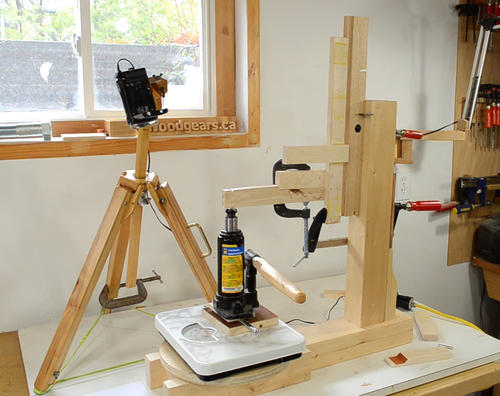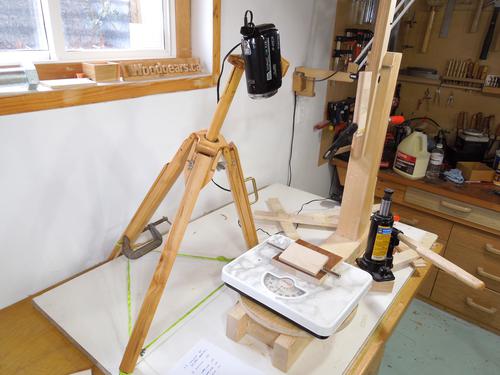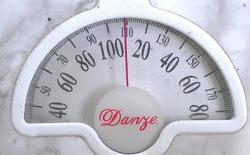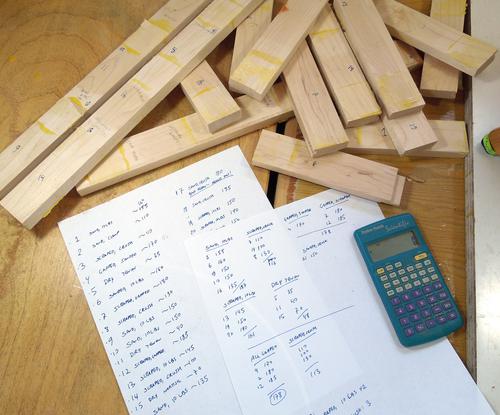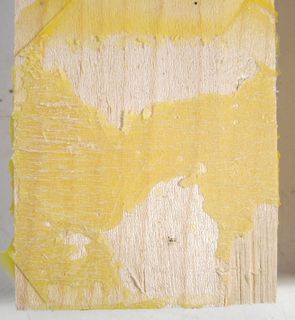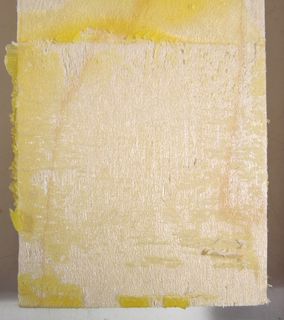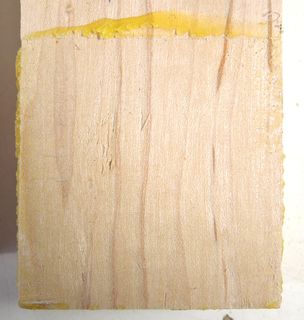|
Common Name(s): Kingwood
Scientific Name: Dalbergia cearensis
Distribution: Brazil (and occasionally from Mexico)
Tree Size: 30-60 ft (10-20 m) tall, less than 2 ft (.6 m) trunk diameter
Average Dried Weight: 74 lbs/ft3 (1,195 kg/m3)
Specific Gravity (Basic, 12% MC): .98, 1.19
Janka Hardness: 3,880 lbf (17,240 N)*
*Estimated hardness based on specific gravity
Rupture Strength: No data available
Elastic Strength: No data available
Crushing Strength: – lbf/in2 (- MPa)
Shrinkage: No data available
|
Color/Appearance: Heartwood is a dark purplish or reddish brown with darker black streaks. Sapwood is a pale yellow.
Grain/Texture: Pores are medium to small. Grain is usually straight, with a fine texture. Can occasionally have interlocking grain.
Endgrain: Diffuse-porous; small pores in no specific arrangement; solitary and radial multiples of 2-3; heartwood deposits occasionally present; growth rings distinct due to seemingly marginal parenchyma bands; rays not visible without lens; parenchyma banded, apotracheal parenchyma diffuse-in-aggregates, paratracheal parenchyma vasicentric, and aliform.
Rot Resistance: Reported as being very durable in decay resistance, and is also resistance to termites.
Workability: Tends to be difficult to work due to its high density. Kingwood has a moderate blunting effect on cutters, and tearout can occur during planing if interlocked grain is present. Can be difficult to glue do to an abundance of natural oils and high density. Turns very well and takes a high polish.
Allergies/Toxicity: Although severe reactions are quite uncommon, Kingwood has been reported as a sensitizer. Usually most common reactions simply include eye and skin irritation. See the articles Wood Allergies and Toxicity and Wood Dust Safety for more information.
Pricing/Availability: Likely to be very expensive, and seldom available as lumber; Kingwood is most often seen as smaller turning stock, with its cost being on par with other scarce exotics in the Dalbergia genus such as Tulipwood or African Blackwood. Kingwood is seldom available in large pieces due to the small size of the tree itself, and is instead used as accent pieces.
Common Uses: Inlays, veneers, tool handles, and other small turned and/or specialty items.
Comments: Considered a true rosewood in the Dalbergia genus, Kingwood is among the densest (and probably strongest) of all the rosewoods. There is very little mechanical data available on Kingwood, though given its weight, and its relation to other rosewoods, it’s likely to be extremely stiff, strong, and stable.In terms of its history, Kingwood supposedly got its name from several French kings (Louis XIV and Louis XV) that preferred the wood in the use of fine furniture.
Related Articles:
- African Blackwood (Dalbergia melanoxylon)
- Amazon Rosewood (Dalbergia spruceana)
- Bois de Rose (Dalbergia maritima)
- Brazilian Rosewood (Dalbergia nigra)
- Burmese Rosewood (Dalbergia oliveri)
- Cocobolo (Dalbergia retusa)
- East Indian Rosewood (Dalbergia latifolia)
- Honduran Rosewood (Dalbergia stevensonii)
- Madagascar Rosewood (Dalbergia baronii)
- Sissoo (Dalbergia sissoo)
- Tulipwood (Dalbergia decipularis)
- Yucatan Rosewood (Dalbergia yucatensis)
Scans/Pictures: A special thanks to Steve Earis for providing the wood sample of this wood species.
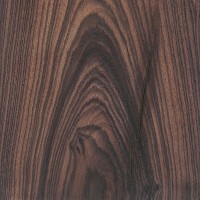
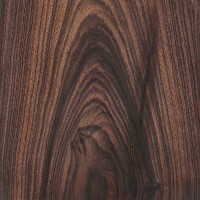
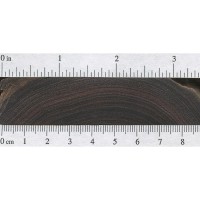
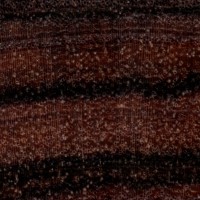
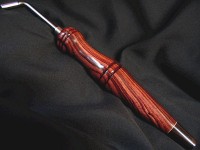
















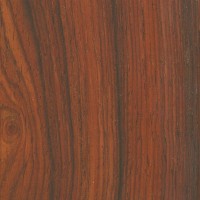
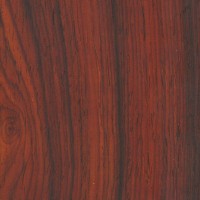
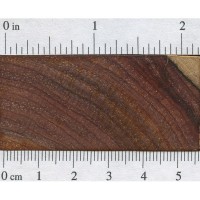
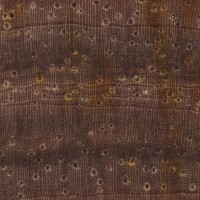
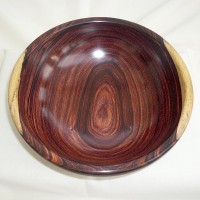
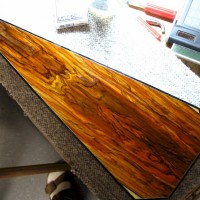










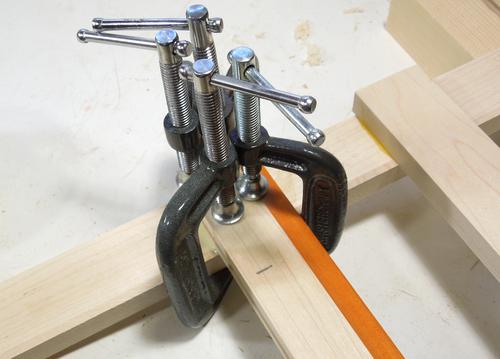
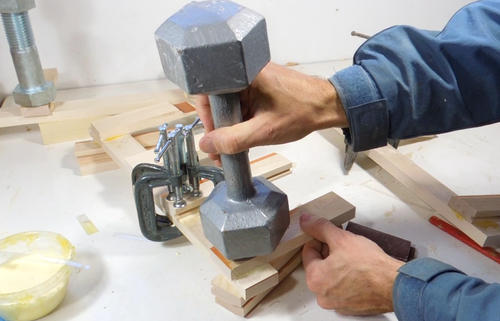
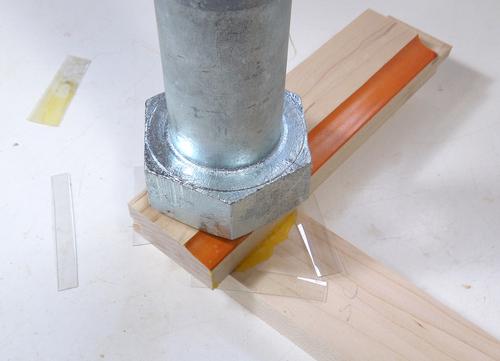
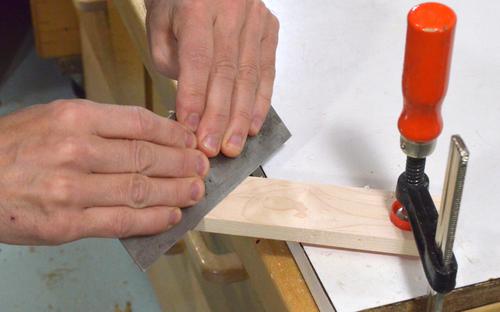
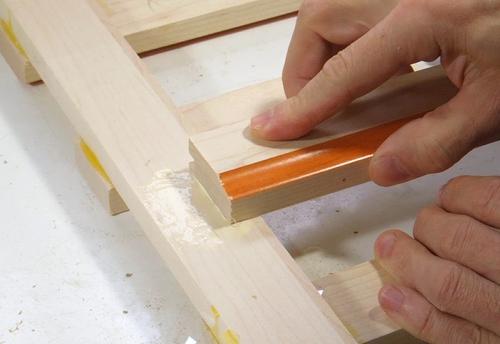
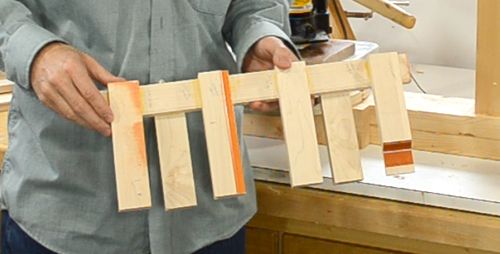 Overall, it took quite a bit of time to prepare the samples. With many cross pieces
glued onto a rail, and most samples only clamped with a weight, I had to wait for
the joints to dry before I could add more. I also wanted to make sure every joint
had at least 48 hours to dry before I tested them. I made over 20 joints.
Overall, it took quite a bit of time to prepare the samples. With many cross pieces
glued onto a rail, and most samples only clamped with a weight, I had to wait for
the joints to dry before I could add more. I also wanted to make sure every joint
had at least 48 hours to dry before I tested them. I made over 20 joints.
